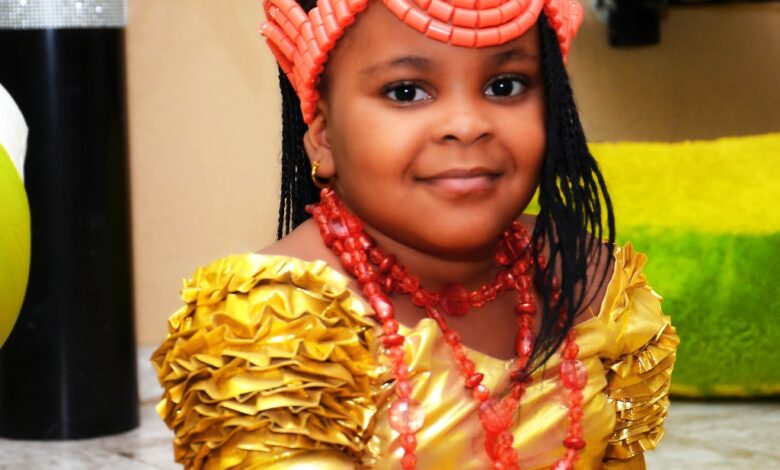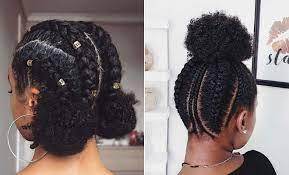Traditional African Clothing: A Celebration of Culture and Heritage

Introduction
Traditional African clothing is a vibrant tapestry that weaves together history, culture, and identity. From the rich symbolism of colors and patterns to the intricate craftsmanship of materials, African attire reflects a deep connection to heritage and tradition. In this article, we’ll explore the diverse landscape of traditional African clothing, delving into its origins, significance, and impact on global fashion.
Overview of Traditional African Clothing
Traditional African clothing encompasses a vast array of garments and accessories, each with its own unique style and symbolism. From the flowing robes of West Africa to the colorful beadwork of the Maasai tribe, these garments serve as more than just clothes—they are symbols of cultural pride and heritage.
Importance of Traditional Clothing in African Culture
In African culture, clothing goes beyond mere fashion—it is a form of self-expression and a means of storytelling. Through intricate patterns and symbols, traditional attire communicates a wealth of information about a person’s identity, social status, and cultural affiliation. Moreover, wearing traditional clothing is often seen as a way to honor ancestors and preserve cultural heritage for future generations.
History of Traditional African Clothing
Origins of Traditional African Clothing
The roots of traditional African clothing can be traced back thousands of years, to the indigenous tribes and civilizations that inhabited the continent. From the ancient Egyptians to the great empires of West Africa, clothing played a central role in African societies, serving as both practical attire and ceremonial garb.
Evolution of Traditional Clothing Styles
Over time, traditional African clothing has evolved in response to changes in society, culture, and technology. Styles vary widely from region to region, with each community putting its own unique spin on traditional garments. For example, the flowing robes of the Tuareg people in North Africa differ significantly from the colorful fabrics worn by the Yoruba tribe in Nigeria.
Influence of Geography and Climate on Clothing Designs
The geography and climate of Africa have also played a significant role in shaping traditional clothing designs. In hot, arid regions like the Sahara Desert, loose-fitting garments made from lightweight fabrics are preferred to help keep the body cool. In contrast, in the humid rainforests of Central Africa, clothing tends to be more tightly woven to provide protection against the elements.
Materials Used in Traditional African Clothing
Natural Fibers
Traditional African clothing is often made from locally sourced materials, with natural fibers such as cotton, silk, and wool being the most common. These fibers are prized for their durability, comfort, and ability to withstand the rigors of daily life in Africa’s diverse climates.
Animal Hides and Skins
In addition to plant-based fibers, animal hides and skins are also used in traditional African clothing. Leather, in particular, is valued for its strength and resilience, making it ideal for items like shoes, belts, and bags. In some cultures, such as the Maasai tribe of East Africa, animal skins are also used as decorative elements in clothing.
Beads, Shells, and Other Embellishments
Traditional African clothing is often adorned with intricate beadwork, shell decorations, and other embellishments, adding a touch of glamour and sophistication to the garments. These embellishments are not only aesthetically pleasing but also carry deep cultural significance, with each bead and shell representing a specific meaning or symbol.
Significance of Colors and Patterns
Symbolism of Colors
Colors play a central role in traditional African clothing, with each hue carrying its own symbolic meaning. For example, red is often associated with vitality, energy, and passion, while blue may symbolize peace, harmony, and spirituality. By choosing specific colors for their attire, individuals can communicate their mood, social status, and cultural identity to others.
Meaning Behind Different Patterns and Designs
In addition to colors, patterns and designs are also imbued with symbolic significance in traditional African clothing. For example, geometric patterns may represent concepts such as unity, balance, and interconnectedness, while animal motifs may symbolize qualities like strength, courage, and wisdom. These patterns are often passed down through generations, serving as a visual language that connects people to their cultural roots.
Regional Variances in Color and Pattern Significance
It’s important to note that the meaning of colors and patterns can vary widely from one region to another within Africa. What may be considered a symbol of fertility in one culture may hold a completely different meaning in another. As such, the interpretation of traditional clothing requires a nuanced understanding of the cultural context in which it is worn.
Types of Traditional African Clothing
Dashikis and Kaftans
Dashikis and kaftans are loose-fitting garments that are commonly worn in West Africa, particularly among men. These flowing robes are typically made from lightweight cotton or silk fabrics and feature intricate embroidery and embellishments. Dashikis and kaftans are prized for their comfort and versatility, making them popular choices for both everyday wear and special occasions.
Kente Cloth
Kente cloth is a type of brightly colored fabric that is traditionally woven by the Ashanti people of Ghana. Each kente cloth is made up of narrow strips of fabric that are carefully sewn together to create intricate geometric patterns. Kente cloth is often reserved for special occasions such as weddings, festivals, and ceremonies, where it is worn as a symbol of prestige and cultural pride.
Agbada
The agbada is a traditional robe that is commonly worn by men in Nigeria and other parts of West Africa. This voluminous garment is characterized by its wide sleeves and flowing silhouette, which exudes an air of elegance and grandeur. Agbadas are typically made from richly patterned fabrics such as brocade or damask and are often embellished with elaborate embroidery and beadwork.
Djellaba
The djellaba is a traditional North African garment that is worn by both men and women in countries such as Morocco, Algeria, and Tunisia. This hooded robe is known for its loose-fitting design and long, flowing sleeves, which provide protection against the harsh desert sun. Djellabas are often made from lightweight fabrics such as linen or cotton and are decorated with intricate embroidery and trimmings.
Kitenge and Ankara
Kitenge and Ankara are brightly colored fabrics that are popular throughout East and West Africa, respectively. These vibrant textiles are often used to make a wide range of traditional garments, including dresses, skirts, and headwraps. Kitenge and Ankara fabrics are prized for their bold patterns and colors, which reflect the rich cultural heritage of the African continent.
Maasai Shuka
The Maasai shuka is a traditional East African garment that is worn by the Maasai people of Kenya and Tanzania. This colorful blanket is typically made from woven cotton or wool and features bold, geometric patterns in vibrant hues. Maasai shukas are not only worn as clothing but also serve practical purposes such as bedding, shelter, and even currency in some cases.
Isiagu and George Wrapper
Isiagu and George wrapper are traditional clothing styles that are commonly worn by the Igbo people of Nigeria. Isiagu is a men’s shirt that is adorned with elaborate embroidery and motifs, while George wrapper is a long, rectangular piece of fabric that is worn by women as a wraparound skirt. These garments are often worn during special occasions such as weddings, festivals, and cultural ceremonies.
Raffia Clothing
Raffia clothing is a traditional form of attire that is made from the fibers of the raffia palm tree, which is native to tropical regions of Africa. This lightweight and breathable fabric is often used to make hats, sandals, and other accessories, as well as clothing items such as skirts, dresses, and shirts. Raffia clothing is prized for its durability and eco-friendliness, as well as its distinctive natural aesthetic.
Traditional Clothing Accessories
Headwraps and Gele
Headwraps, also known as gele in some African cultures, are an integral part of traditional African attire, particularly for women. These elaborate head coverings are made from brightly colored fabrics such as silk, cotton, or chiffon and are often adorned with beads, sequins, or embroidery. Headwraps are not only worn for aesthetic purposes but also serve as a means of expressing cultural identity and personal style.
Beadwork and Jewelry
Beadwork and jewelry are essential accessories in traditional African clothing, serving as symbols of wealth, status, and cultural heritage. Beadwork is often used to adorn clothing, accessories, and even hairstyles, with each bead color and pattern carrying its own symbolic meaning. Similarly, jewelry such as necklaces, bracelets, and earrings are worn to accessorize traditional attire and add a touch of elegance and flair.
Sandals and Footwear
Traditional African footwear includes a wide range of styles, from simple sandals made from leather or woven grass to intricately beaded slippers and boots. These shoes are not only practical for navigating the diverse terrain of Africa but also serve as expressions of cultural identity and craftsmanship. In some cultures, certain types of footwear are reserved for specific occasions or ceremonies, such as weddings or religious festivals.
Umbrellas and Parasols
Umbrellas and parasols are often used as accessories in traditional African clothing, particularly during outdoor events and ceremonies. These decorative accessories not only provide protection from the sun and rain but also add a touch of elegance and sophistication to the wearer’s ensemble. Umbrellas and parasols are often elaborately decorated with embroidery, beadwork, or hand-painted designs, making them both functional and fashionable.
Traditional African Clothing for Special Occasions
Weddings
Weddings are a joyous occasion in African culture, marked by elaborate ceremonies, colorful celebrations, and, of course, stunning traditional attire. Brides and grooms often dress in their finest traditional clothing, with the bride typically wearing a beautifully embroidered dress or wrapper, accessorized with intricate beadwork and jewelry. Guests also dress to impress, with women donning elaborate headwraps and men wearing stylish dashikis or agbadas.
Birthdays and Coming of Age Ceremonies
Birthdays and coming of age ceremonies are important milestones in African culture, celebrated with great pomp and ceremony. Young girls may mark their transition into womanhood with a lavish party, where they don traditional attire such as kente cloth or Ankara dresses. Similarly, boys may undergo rites of passage rituals that involve wearing special garments and accessories that symbolize their newfound maturity and responsibilities.
Religious Festivals
Religious festivals are a central part of African cultural life, providing communities with an opportunity to come together in worship, fellowship, and celebration. During religious festivals such as Eid al-Fitr, Christmas, or Yom Kippur, individuals often dress in their finest traditional clothing to attend prayers, ceremonies, and feasts. These garments may vary depending on the specific religious and cultural traditions of each community but are always worn with reverence and respect for the occasion.
Cultural Celebrations
Cultural celebrations such as harvest festivals, tribal gatherings, and heritage days are an important part of African cultural life, providing communities with an opportunity to showcase their traditions, customs, and way of life. During these celebrations, participants often wear traditional clothing that reflects their cultural identity and heritage, from brightly colored dashikis and kaftans to intricately beaded Maasai shukas and headwraps.
Influence of Western Fashion on Traditional African Clothing
Adoption of Western Clothing Styles
The influence of Western fashion on traditional African clothing cannot be understated, with many African communities adopting Western-style garments such as jeans, t-shirts, and suits as everyday attire. This shift towards Western clothing is often driven by factors such as globalization, urbanization, and changing social norms, as well as a desire to modernize and keep up with global fashion trends.
Fusion of Traditional and Western Elements
Despite the growing popularity of Western fashion, traditional African clothing continues to thrive, albeit in a more modernized form. Many designers and fashion brands are now incorporating traditional African fabrics, colors, and patterns into their collections, creating a fusion of East-meets-West style that appeals to a global audience. This fusion of traditional and Western elements not only celebrates African heritage but also promotes cultural diversity and inclusivity in the fashion industry.
Preservation Efforts of Traditional Clothing
In response to the challenges posed by globalization and modernization, there has been a renewed effort to preserve and promote traditional African clothing. Organizations such as the African Fashion Foundation and the African Heritage Foundation are working to document, archive, and showcase traditional clothing styles from across the continent, ensuring that they are not lost to history. Additionally, initiatives such as fashion shows, exhibitions, and cultural festivals help to raise awareness of the importance of traditional clothing and inspire future generations to embrace their cultural heritage.
Challenges Facing Traditional African Clothing
Globalization and Cultural Homogenization
One of the biggest challenges facing traditional African clothing is the spread of globalization and cultural homogenization, which threaten to erode cultural diversity and heritage. As Western fashion becomes more dominant in Africa and around the world, traditional clothing styles risk being overshadowed and forgotten, leading to a loss of cultural identity and heritage.
Economic Factors
Economic factors also play a significant role in the decline of traditional African clothing, with many communities struggling to afford the cost of handmade fabrics and artisanal craftsmanship. Mass-produced, inexpensive clothing imported from overseas often competes with locally made traditional attire, making it difficult for traditional artisans and designers to earn a living from their craft. As a result, many traditional clothing traditions are at risk of dying out, as younger generations opt for cheaper, more readily available alternatives.
Modernization and Changing Lifestyles
The rapid pace of modernization and changing lifestyles in Africa has also had an impact on traditional clothing practices. As more people move to urban areas and adopt Western-style clothing, traditional garments are increasingly seen as outdated or impractical for everyday wear. In some cases, traditional clothing is reserved for special occasions or ceremonial events, rather than being worn on a daily basis as it once was. This shift towards Western fashion represents a loss of cultural identity and heritage for many African communities, as traditional clothing styles are gradually replaced by more globalized, homogenized alternatives.
Revival and Promotion of Traditional African Clothing
Fashion Shows and Runway Events
One way that traditional African clothing is being revived and promoted is through fashion shows and runway events that showcase the diversity and creativity of African fashion. Designers and artisans from across the continent come together to present their latest collections, featuring traditional fabrics, colors, and patterns in innovative and contemporary designs. These events not only provide a platform for African designers to showcase their talent but also help to challenge stereotypes and misconceptions about African fashion on the global stage.
Social Media Campaigns
Social media has also played a key role in the revival and promotion of traditional African clothing, with platforms such as Instagram, Facebook, and TikTok providing a space for designers, influencers, and enthusiasts to share their love of African fashion with the world. Hashtags such as #AfricanFashion, #WearAfrican, and #AnkaraStyle have gained popularity, helping to raise awareness of traditional clothing styles and inspire others to embrace their cultural heritage.
Cultural Festivals and Events
Cultural festivals and events are another important avenue for promoting traditional African clothing and celebrating cultural diversity. From the Lagos Fashion Week in Nigeria to the Zanzibar International Film Festival in Tanzania, these events bring together artists, designers, performers, and enthusiasts from across the continent to celebrate African culture through music, dance, food, and fashion. By showcasing traditional clothing alongside other forms of artistic expression, these festivals help to highlight the beauty and diversity of African heritage and inspire pride in cultural identity.
Advocacy for Cultural Preservation
Finally, advocacy for cultural preservation plays a crucial role in ensuring the survival and revitalization of traditional African clothing. Organizations such as the United Nations Educational, Scientific and Cultural Organization (UNESCO) and the African Union (AU) work to safeguard intangible cultural heritage, including traditional clothing practices, through initiatives such as cultural preservation programs, heritage education, and community engagement. By raising awareness of the importance of traditional clothing and advocating for its preservation, these organizations help to ensure that future generations can continue to celebrate and appreciate Africa’s rich cultural heritage.
Impact of Traditional African Clothing on Global Fashion
Popularity of African-Inspired Fashion
In recent years, there has been a growing interest in African-inspired fashion on the global stage, with designers and brands around the world drawing inspiration from traditional African clothing styles, fabrics, and motifs. From runway shows in Paris to street style in New York, African-inspired fashion has become increasingly visible and influential, sparking a trend for bold colors, vibrant prints, and ethnic embellishments in the fashion industry.
Influence on International Designers and Brands
The influence of traditional African clothing on international designers and brands can be seen in collections from luxury fashion houses such as Louis Vuitton, Gucci, and Burberry, which have incorporated African-inspired elements into their designs. From African wax prints to Maasai beadwork, these designers draw on the rich cultural heritage of Africa to create unique and distinctive garments that appeal to a global audience. By collaborating with African artisans and incorporating traditional techniques into their collections, these brands not only celebrate African culture but also contribute to the economic empowerment of local communities.
Representation and Diversity in Fashion Industry
The rise of African-inspired fashion has also sparked conversations about representation and diversity in the fashion industry, challenging traditional standards of beauty and Eurocentric notions of style. African models, designers, and influencers are increasingly being recognized and celebrated for their talent and creativity, paving the way for greater inclusivity and representation in fashion. By embracing traditional African clothing and celebrating diverse cultural identities, the fashion industry has the power to promote social change and empower marginalized communities around the world.
Conclusion
In conclusion, traditional African clothing is more than just fabric and thread—it is a living testament to the rich cultural heritage and diversity of the African continent. From the vibrant colors and intricate patterns to the symbolic meanings and craftsmanship, traditional attire tells a story of identity, pride, and resilience. As we look to the future, it is essential that we continue to celebrate and preserve traditional African clothing, not only as a form of artistic expression but also as a means of honoring our shared humanity and cultural heritage. By supporting local artisans, promoting cultural education, and embracing diversity in fashion, we can ensure that traditional African clothing continues to inspire and captivate audiences around the world for generations to come.




